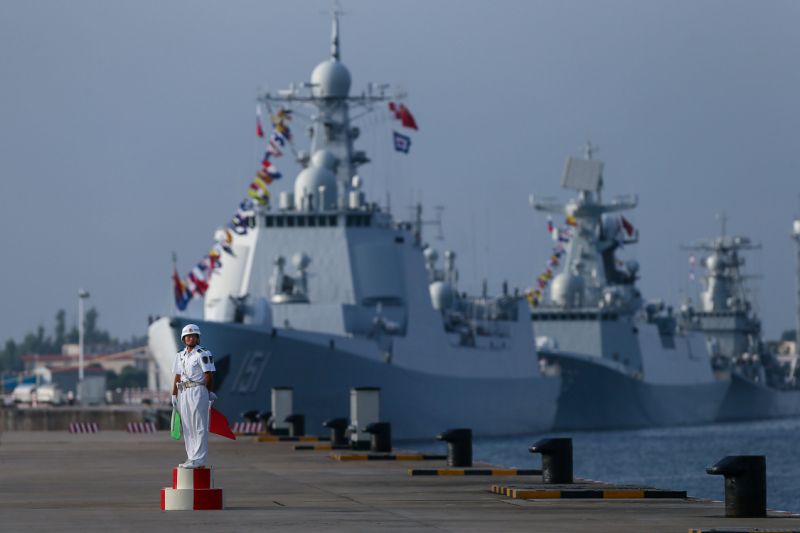UPDATE: Dec. 17, 1 p.m. EST: The Pentagon announced Saturday that it has “secured an understanding” with Beijing to return the underwater drone seized by China in international waters, after Beijing accused the U.S. of “hyping up” the incident.
The Pentagon has confirmed that a U.S. underwater drone surveying in the South China Sea was seized by a Chinese navy ship on Friday.
Irate American officials declared the vessel “stolen” and demanded its immediate return. They claim the drone was engaging in innocuous oceanographic survey of water temperatures and salinity in international waters.
Regardless of the purpose of the drone mission, its close proximity to Chinese defence installations in the South China Sea and to China itself, likely provoked the response.
Other than the initial acknowledgement, Chinese diplomats have made no further comment. Given the changing US political climate post-election and the highly controversial geopolitics of that particular part of the Pacific, it is unlikely that the US will get the drone back anytime soon.
The future of the Obama administration’s ‘Pivot To Asia’ foreign policy, which saw exponentially increased US military activity in the Pacific Rim as well as significant build-up of the military and naval resources of US allies in the region, lies in ruination with no guarantee that the incumbent administration will continue the policy.
This is due to the abject failure (indeed, seemingly the total collapse) of the Trans-Pacific Partnership Agreement, which President-elect Donald Trump has promised to scrap on his first day in office and which Fareed Zakaria once described as being “at the heart of” the Pivot To Asia.
The deeply unpopular trade agreement, along with its European and South American counterparts, the Trans-Atlantic Trade and Investment Partnership and the Trade In Services Agreement respectively, had been the subject of worldwide protest actions over a number of years.
This has left the door open to China’s alternative trade grouping known as the Regional Comprehensive Economic Partnership. Meaning that the balance of global power is regaining some equilibrium both in economic terms and militarily.
Despite its many perceived shortcomings in domestic policy, the new US administration appears to be reticent to continue waging endless global conflicts, and China can afford to simply snub their nose at American disgruntlement over the seizing of the underwater vessel.
While drone technologies have increasingly entered the public consciousness in recent times, little is known about the various types of underwater drones.
They come in all manner of shapes and sizes and scale from commercially available models priced at less than USD$1000, to behemoth military constructions valued into the millions.
Rutgers University have developed an underwater drone that can both swim and fly.
The ‘Ghost Swimmer’, known as ‘Silent Nemo’ seen in this video released by the US Office of Naval Research, is shaped like an overweight, metal hybrid dolphin replete with dorsal fin and tail.Making it abundantly obvious that underwater drones are being developed for both overt and covert means, and when weaponised, could become a serious threat to any world power.
The chances of the US allowing a foreign power to operate underwater drones anywhere near its territorial waters or naval defences are minimal.
Its expectation to take such a liberty itself, without there being immediate military and diplomatic ramifications, has clearly overstepped the mark.
In the video below, Luke Rudkowski of WeAreChange breaks down what happened, why it happened and the inevitable clash between these two major super powers.
By Suzie Dawson











Sign up on lukeunfiltered.com or to check out our store on thebestpoliticalshirts.com.